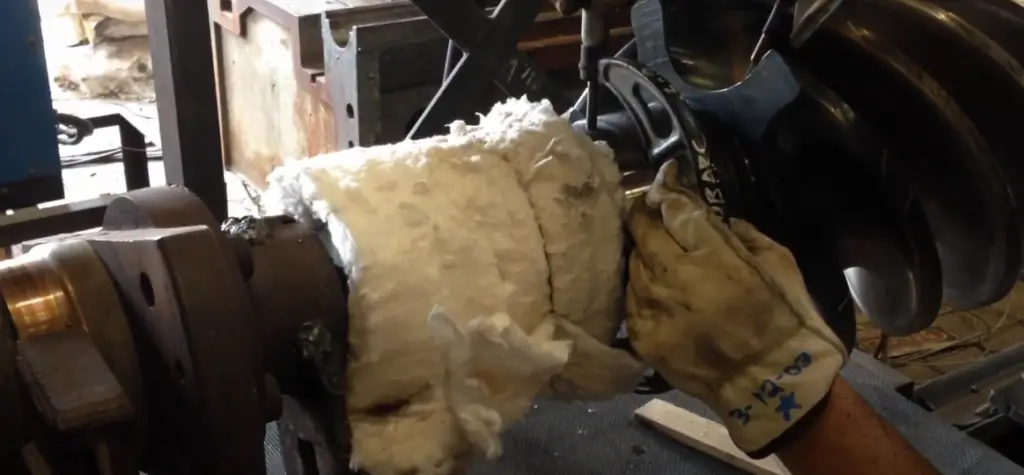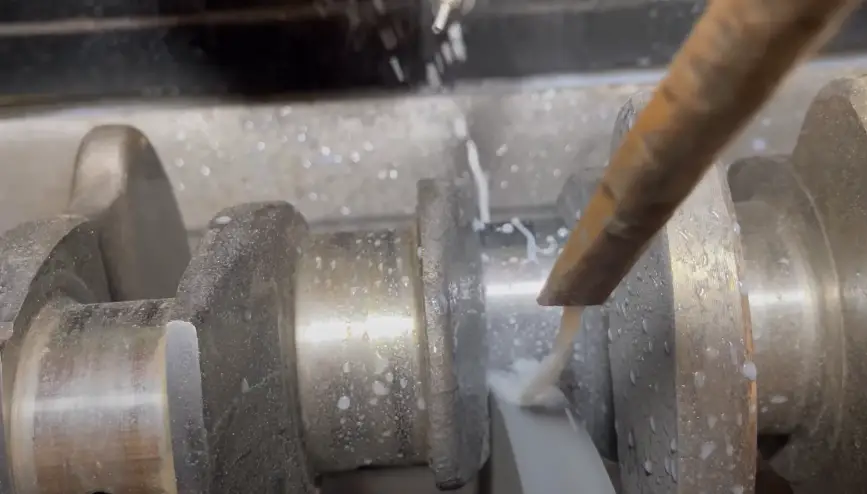Crankshaft journal welding is a repair technique used to restore damaged or worn crankshaft journals by applying a specialized weld material to build up the surface. This process is followed by precise machining and grinding to achieve the original specifications and ensure proper engine function. It is a cost-effective alternative to replacing the crankshaft, extending its lifespan and maintaining engine performance.
Crankshaft journal welding is a specialized process used to repair or restore crankshafts that have been damaged or worn out due to usage, friction, or mechanical failures. The crankshaft is one of the most critical components in an engine, converting the linear motion of the pistons into rotational motion that powers the vehicle.
Over time, crankshaft journals can suffer from wear, scoring, cracks, or other forms of damage. Crankshaft journal welding offers an effective solution to repair these issues without replacing the entire crankshaft, saving both time and money.
Contents
What is Crankshaft Journal Welding?
Crankshaft journal welding involves depositing a layer of weld material onto the damaged crankshaft journal surface to build it back up to its original dimensions. This process is typically followed by machining and grinding to restore the crankshaft to precise tolerances required for proper engine function. The goal is to repair the crankshaft so that it performs like a new part, maintaining the same durability, strength, and balance as before the damage occurred.
The process is highly specialized and requires skilled technicians, specialized equipment, and strict adherence to procedures to ensure the crankshaft is returned to a condition that meets or exceeds its original specifications.
Types of Damage Repaired by Crankshaft Journal Welding
Crankshaft journal welding is used to repair several types of damage, including:
- Scoring and Scratching: Due to metal-to-metal contact, scoring or scratching can occur on the crankshaft journal surfaces, leading to oil leakage, poor lubrication, and eventual bearing failure.
- Cracks and Fractures: Crankshafts can develop cracks or fractures due to stress, fatigue, or thermal cycling. Welding can be used to fill in and repair these cracks, preventing further damage.
- Wear and Ovality: Continuous operation can cause journals to wear down or become out-of-round (ovality), resulting in improper bearing contact and increased friction. Welding can build up the journal material back to its correct shape and size.
- Pitting and Corrosion: Corrosion or pitting can occur due to exposure to moisture or contaminants in the oil. Crankshaft welding can remove these imperfections and restore the smooth surface necessary for optimal bearing function.
- Grooves or Keyway Damage: Grooves or keyways on the crankshaft can become damaged over time. Welding can be used to fill and rebuild these areas to their original condition.
Crankshaft Journal Welding Process
Crankshaft journal welding involves several steps, each critical to ensure a successful repair:
- Inspection and Preparation: Before welding, the crankshaft must be thoroughly inspected to assess the extent of the damage. Non-destructive testing (NDT) methods like magnetic particle inspection (MPI) or dye penetrant testing (DPT) are often used to identify cracks and defects. The crankshaft is then cleaned to remove any oil, grease, or contaminants that could affect the welding process.
- Pre-Weld Machining: Damaged areas may need to be machined or ground down to remove surface irregularities, pitting, or cracks. This provides a clean surface for the welding material to adhere to and ensures that the welded area will have uniform properties.
- Welding: The welding process involves applying a specific filler material to the damaged journal area. The type of filler material depends on the base material of the crankshaft and the specific repair requirements. Common welding methods for crankshaft repair include submerged arc welding (SAW), tungsten inert gas (TIG) welding, and metal inert gas (MIG) welding. The welding process is carefully controlled to prevent excessive heat buildup, which could cause warping or further damage to the crankshaft.
- Post-Weld Heat Treatment: After welding, the crankshaft typically undergoes heat treatment to relieve any internal stresses that may have developed during the welding process. This step is crucial to prevent distortion and to ensure that the repaired area has the necessary mechanical properties for durability.
- Machining and Grinding: Once the welded material has cooled and any heat treatment is completed, the crankshaft undergoes precise machining and grinding to restore the journal to its original dimensions and surface finish. This process ensures that the crankshaft meets the required tolerances and specifications.
- Final Inspection: After machining, the crankshaft is inspected again using NDT methods to ensure that no new cracks or defects have developed during the welding and machining processes. The journals are measured to verify that they conform to the required specifications, and the crankshaft is dynamically balanced to ensure smooth operation.

Benefits of Crankshaft Journal Welding
Crankshaft journal welding offers several benefits, these are –
- Cost-Effective: Crankshaft journal welding is often more economical than replacing the entire crankshaft, especially for rare or high-performance engines where new crankshafts are expensive or hard to find.
- Minimizes Downtime: Repairing a crankshaft through welding can significantly reduce downtime compared to sourcing and fitting a new crankshaft, particularly in industrial or heavy-duty applications.
- Restores Original Strength: When done correctly, crankshaft welding restores the journal to its original dimensions and strength, ensuring that the engine can operate safely and efficiently.
- Extends Crankshaft Life: By addressing wear and damage through welding, the overall lifespan of the crankshaft can be extended, reducing the frequency of costly replacements.
- Customization and Performance Enhancement: Crankshaft welding can also be used to modify journal dimensions or improve surface properties, such as hardness, to enhance performance in high-stress applications.

Considerations for Successful Crankshaft Journal Welding
Successful crankshaft journal welding requires careful attention to several key factors:
- Material Compatibility: The filler material used for welding must be compatible with the crankshaft’s base material to ensure proper adhesion and to match the mechanical properties of the original metal.
- Controlled Heat Input: Excessive heat during welding can cause warping, cracking, or other forms of damage. It is crucial to control the heat input and allow for gradual cooling to prevent these issues.
- Precision Machining: After welding, the crankshaft must be machined to very tight tolerances to ensure proper fit and function. Any deviation can lead to improper bearing seating, increased wear, and potential engine failure.
- Balancing: The crankshaft must be dynamically balanced after welding and machining to prevent vibrations and ensure smooth engine operation. Imbalances can cause bearing wear, noise, and potential engine damage.
- Quality Control: Thorough inspection and testing before, during, and after the welding process are essential to ensure the crankshaft meets all specifications and is free from defects.
Related Article
Crankshaft Journal Polishing Tool
How to Polish Crankshaft Journals
Frequently Asked Questions
Here are some FAQs about the crankshaft journal welding –
Is crankshaft journal welding a permanent solution?
Yes, when performed correctly, crankshaft journal welding is a permanent repair solution that restores the crankshaft to its original strength and functionality. It can effectively extend the life of the crankshaft, making it suitable for long-term use.
What types of welding are used for crankshaft journal repair?
Common welding methods for crankshaft journal repair include submerged arc welding (SAW), tungsten inert gas (TIG) welding, and metal inert gas (MIG) welding. The choice of method depends on the type of damage, material, and specific requirements of the repair.
Can all crankshafts be repaired through welding?
Not all crankshafts are suitable for welding repair. Factors such as the extent of damage, material composition, and overall condition of the crankshaft determine whether welding is a feasible option. A thorough inspection is necessary to evaluate the repairability.
How long does the crankshaft journal welding process take?
The duration of the crankshaft journal welding process depends on the extent of the damage, the size of the crankshaft, and the specific welding and machining steps required. Generally, it can take anywhere from a few days to a couple of weeks, depending on complexity and workload.
Does crankshaft journal welding affect engine performance?
If done correctly, crankshaft journal welding does not negatively affect engine performance. In fact, it can restore the crankshaft to its original specifications, ensuring optimal performance and longevity. However, improper welding or machining can lead to engine imbalances, wear, and potential failures.
Conclusion
Crankshaft journal welding is a valuable repair technique that allows for the restoration of damaged crankshafts, saving time and money compared to complete replacement. By carefully controlling the welding process, ensuring proper material compatibility, and following strict quality control measures, the crankshaft can be brought back to its original condition or better. This process not only extends the lifespan of the crankshaft but also ensures that the engine operates smoothly and efficiently for many more miles.